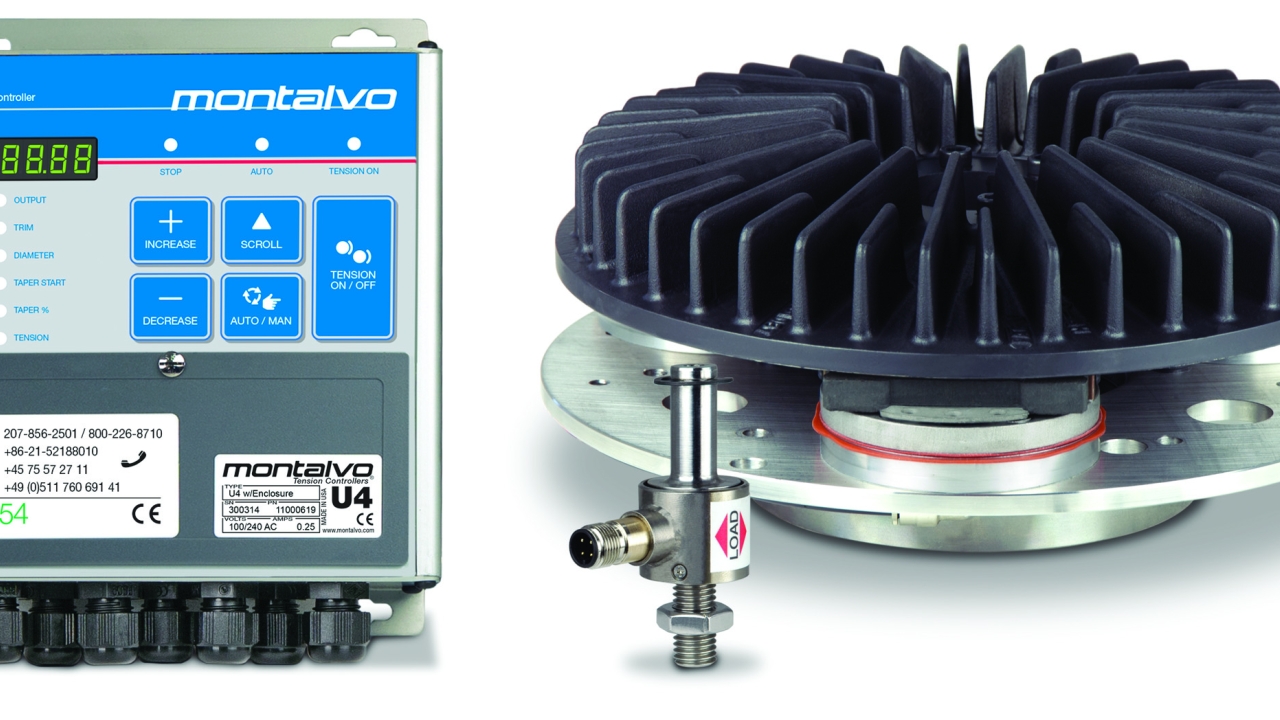Open-loop web tension control

Open-loop tension controls tend to be simple, inexpensive and can be very effective for providing constant unwind tension for web-based processes. While we can mostly agree that a closed-loop tension control system provides the most accurate and consistent form of web tension control, there may be other mitigating factors that favor an open-loop type of system for a particular process.
Some of these factors include overall cost and complexity of installing a closed-loop system, limited machine real estate available for such installations, perceived tension tolerance (ability for the material or process to withstand significant variability around the optimum ‘set point’ tension), or process restrictions and/or limitations, to name but a few.
Typical open-loop tension control systems rely fully on roll diameter (indirect) feedback to control tension. Products such as ultrasonic sensors, lasers, or proximity sensors are used to measure or calculate changes in the roll’s diameter and relay this information to the tension controller. The controller monitors and/or calculates the roll diameter as it changes during the unwinding process, and automatically reduces the torque of the brake proportionally. As the T=Tq/R formula dictates, this will maintain constant web tension from full roll to core.
Because there is no direct web feedback in order to actually monitor and regulate control (hence the term open-loop control), the accuracy of the control system depends on the accuracy of the diameter calculation and the linearity of the torque device attached to the roll of material. Torque devices include brakes, motors, or drives that should deliver linear and responsive torque.
In a well-maintained system, with a very linear torque device, open-loop tension control can provide tension accuracy within about 10 percent of the desired setpoint, compared to 1-2 percent in closed-loop systems. We refer to this as the tension tolerance of your material and/or process.
If the system degrades mechanically, or the linearity of the torque device is sub-standard or changes over time, this tension accuracy will be compromised.
If your materials or process can withstand this level of tension variability, then an open-loop tension control system may be a good option for you. It is certainly a far cry better than utilizing a manual control system, which relies on the operators to make regular and consistent changes to the torque level of the brake as the roll diameter changes. You can probably guess what the tension variability will be under manual control.
Because tension is being controlled proportionally with no direct web feedback, another highly dependent quality factor of an open-loop system is the skill and experience of the operator to ensure that the starting web tension – controller trim level/starting brake output level – is correct for the material and process. If you run a variety of materials, and/or have several shifts and have different operators, it can be challenging to obtain the same results consistently.
To recap: in order to have a high quality open-loop tension control system you must have a high quality diameter calculation device, a linear, smooth torque device, an experienced operator, and a quality controller that can bring everything together.
New open-loop tension control technology has reduced tension tolerances from 10 percent to around 5 percent – which compares to closed-loop tolerance of 1-2 percent – while making it easier for operators and adding quality and performance to the open-loop processes.
This article first appeared in L&L issue 5, 2016, which can be read online here
Stay up to date
Subscribe to the free Label News newsletter and receive the latest content every week. We'll never share your email address.

